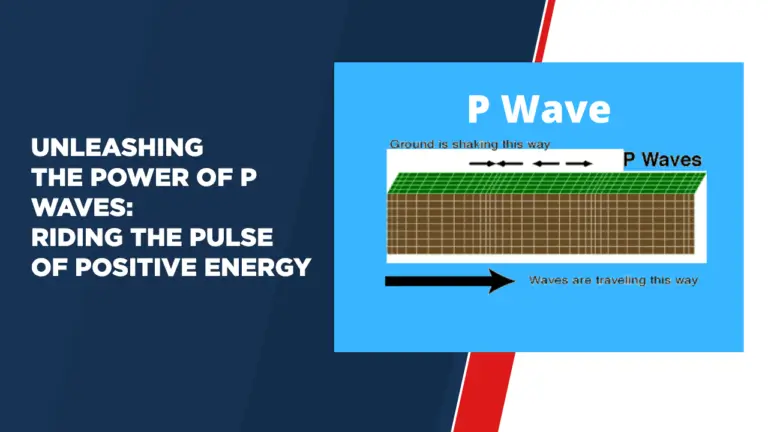Unleashing the Power of P Waves: Riding the Pulse of Positive Energy!
Introduction
In the fields of seismology and geophysics, there are mysteries waiting to be uncovered in the Earth’s interior. One of the fundamental discoveries that revolutionized our understanding of the structure of the planet was the identification of seismic waves, specifically P waves. These P waves, also known as primary waves, are an integral part of the seismic wave family, with distinctive properties that provide invaluable insight into Earth’s structure and phenomena. This article throws light upon the importance of P waves, their abnormalities and their role in illuminating the mysterious world beneath our feet.
Understanding P Waves and S Waves
Seismic waves are vibrations that radiate outward from the epicenter of an earthquake and spread into the Earth’s interior. P waves, short for “primary waves”, are the fastest seismic waves, characterized by their compressional speed. They travel through solids, liquids, and gases, making them the first waves to be recorded on seismometers after an earthquake. In contrast, S waves, or “secondary waves”, are slower and exhibit shear or transverse motion. They only penetrate solids, causing a major difference in their behavior compared to P waves.
P Wave Represents the Inner Earth
P waves play an important role in understanding the internal structure of the Earth. Their ability to travel through all mediums allows them to pass through the Earth’s core, mantle, and crust. By analyzing the arrival times of P waves at different seismic stations, scientists can build models of the Earth’s layers and obtain information about the composition and density variations within these layers. This knowledge has contributed significantly to our understanding of plate tectonics, the movement of continents, and the dynamics of the Earth’s interior.
P Wave Abnormalities and Shadow Zone
In some situations, P waves may deviate from their expected behavior, indicating abnormalities in the Earth’s structure. P wave abnormalities may be caused by geological features such as underground cavities or variations in rock density. These irregularities can bend, refract, or reflect P waves, creating patterns that seismologists carefully analyze to map subsurface structures.
Interestingly, P waves also manifest a unique phenomenon known as the “P wave shadow zone”. This region, located between 103 and 142 degrees from the epicenter, experiences a complete absence of P waves. This phenomenon occurs due to the refraction and reflection of P waves as they pass through the Earth’s core, which is made of molten iron and nickel. The study of the P wave shadow region has been helpful in validating the Earth’s core structure.
Prolonged P Wave: Significance and Implications
In some medical contexts, the term “prolonged P wave” has a different meaning. In electrocardiography (ECG), the P wave represents the electrical activity associated with atrial depolarization, which is the contraction of the atria in the heart. Prolonged P waves may indicate various heart conditions, such as atrial enlargement or conduction abnormalities. By analyzing the duration and morphology of the P waves in an ECG, medical professionals can diagnose and monitor cardiac disorders.
Conclusion
From delving deep into the Earth’s interior to diagnosing cardiac conditions, P waves have proven to be a versatile and valuable tool. Its ability to cross various mediums and its characteristic behavior have allowed scientists and medical experts to unlock mysteries spanning geophysics and cardiology. By continuing to explore the importance of P waves, we are not only uncovering the secrets of our planet, but also increasing our understanding of the complex systems that sustain life.




